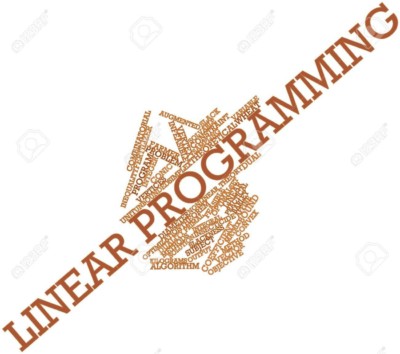Linear Programming Problem is a mathematical technique for finding optimal solutions to problems. Its problems expressed using linear equations and inequalities. The real-world problems represent accurately by the mathematical equations of a linear program also this method will find the best solution to the problem.
In 1947, during World War ll, George B Dantzig while working with the US Air Force, developed LP model, primarily for solving military logistic problems. But now that time it is broadly usages in all functional area of management, airlines, agriculture, military operation as well as
optimal production mix or quantity, transportation planning, and scheduling, research and development, health care system as well as pollution control etc.
It is important they understand the meaning of the world – linear and programming. The world linear refers to the linear relationship among variables in a model. Therefore, a given change in one variable causes a proportional change in another variable. The word programming refers to the mathematical modeling and solving of a problem that involves the use of limited resources, by choosing a particular course of action among the given course of action in order to achieve the desired objective.
The user –friendly computer software for solving LPP such as LINDO, LINGO, TORA, STORM, etc.
Assumptions of LPP:-
(a) Certainty :
Another underlying assumption of linear programming is a certainty, i.e.parameters of objective function coefficients and the coefficients of constraint inequalities are known with certainty. Such as profit per unit of product, availability of material and labor per unit as well as the requirement of material and labor per unit are known such that it comes from the linear programming problem.
(b) Additive
This assumption of additive asserts that the total profit of the objective
a function such as to determine the sum of profit contributed by each product separately. Similarly, the total amount of resources usages to determine the sum of resources usages of each product separately. Therefore it implies, there is no interaction between the decision variables.
(c) Linearity(or proportionality)
: The basic assumption underlying the linear
programming is that any change in the constraint inequalities will have the
proportional change in the objective function. This means if a product contributes Rs 20 towards the profit as well as the total contribution would be equal to 20×1, where x1 is the number of units of the product.
(d) Divisibility (or continuity)
Another assumption of linear programming is that the
decision variables are continuous. This means a combination of outputs can be usages with the fractional values along with the integer values.
e) Finite Choices
This assumption implies that the decision maker has certain choices,
and the decision variables assume non-negative values. The non-negative assumption is true in the sense, the output in the production problem cannot be negative. Thus, this assumption is considered feasible.
Therefore, while solving for the linear programming problem, these assumptions should be kept in mind such that the best alternative is chosen.
ADVANTAGE OF LINEAR PROGRAMMING PROBLEM :
There are many advantages to LPP. Some usages are given below.
(a) LP helps decision-makers to use their productive resource effectively.
(b) LP improve the quality of decisions.
(c) LP helps to arrive at an optimal solution to a decision problem.
(d) LP helps to decision problem highlight bottlenecks in the production process.
